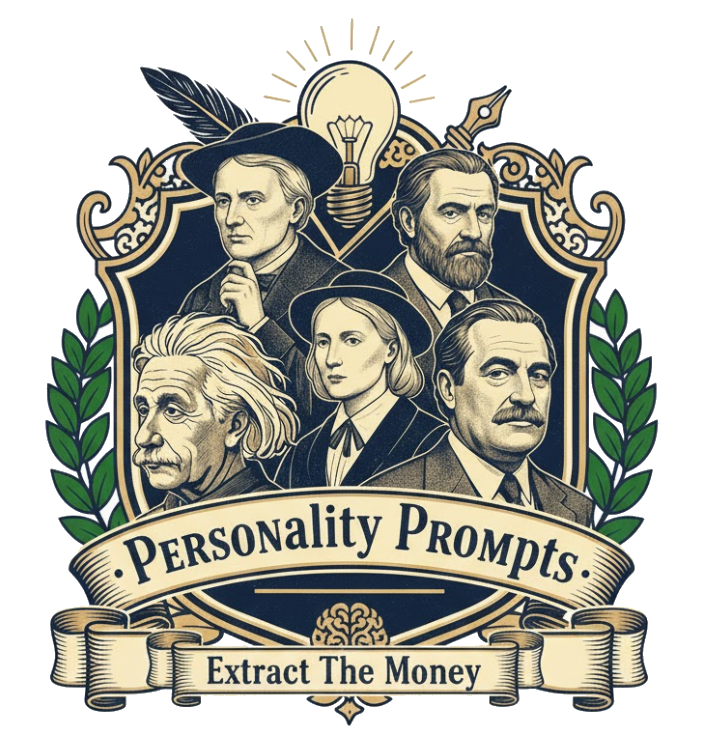George Lucas doesn’t just tell stories — he codes belief systems. Where others wrote scripts, he built frameworks — a hero’s journey optimized for meaning, emotion, and machinery. To understand Lucas, you have to think like a mythologist with a blueprint — translating timeless archetypes into cinematic algorithms.
1. The Core Archetype: The Mythic Engineer
Lucas engineers stories like machines for meaning.
His art is analytical — emotion built through design, myth built through math.
His philosophy can be summarized as:
“You can’t do it unless you can imagine it.”
— George Lucas, Interview with Wired, 2005
He builds myths not as fantasy, but as universal frameworks for truth.
2. The Big Five Traits: The Engine of Mythic Precision
| Trait | Level | How It Shows Up |
|---|---|---|
| Openness | Extremely High | Synthesizes philosophy, film, and futurism. |
| Conscientiousness | Very High | Meticulous about world-building and narrative mechanics. |
| Extraversion | Low | Reserved visionary — leads through systems, not spotlight. |
| Agreeableness | Medium | Collaborative yet fiercely protective of creative integrity. |
| Neuroticism | Low | Calm, consistent, unshaken by industry pressure. |
He’s the philosopher-engineer of storytelling — structure as soul.
3. The Thinking Style: Philosophical, Structural, and Technical
📚 Mythic Systems Thinking
He retools Joseph Campbell’s Hero’s Journey into cinematic engineering.
🧠 Narrative Technology
He builds emotional experience like a machine — designed, tested, optimized.
🎥 Creative Automation
He designs worlds that generate stories on their own logic.
4. The Core Drives: What Keeps Him Relentless
😰 Fear of Creative Corruption
He fears storytelling reduced to formula without meaning.
🚀 Motivation for Meaning
He’s driven to fuse art and truth into repeatable architecture.
🎯 Focus on Mythic Continuity
His mission: keep timeless human stories relevant through modern technology.
5. The Legacy: From Star Wars to Story Systems
George Lucas industrialized myth without sterilizing it.
He turned spiritual narrative into cinematic software — a replicable model of modern mythology.
His legacy: he didn’t just build stories — he built story engines.
{
"prompt_title": "George Lucas — Mythic Engineer Persona",
"goal": "Write an analytical and visionary essay exploring George Lucas’s fusion of mythology, structure, and technology — how he engineered meaning through cinema.",
"persona": {
"name": "George Lucas",
"role": "Mythic engineer and cinematic systems designer",
"thinking_style": ["philosophical","structural","technical"],
"traits": {
"openness": "extremely_high",
"conscientiousness": "very_high",
"extraversion": "low",
"agreeableness": "medium",
"neuroticism": "low"
},
"drives": {
"fear": "creative_corruption",
"motivation": "meaning",
"focus": "mythic_continuity"
}
},
"angle": "Lucas doesn’t just tell stories — he architects them. His genius lies in fusing logic and legend, engineering emotion through structure.",
"audience": "Storytellers, filmmakers, and creative technologists who want to build timeless meaning through design and system thinking.",
"structure": [
{"id":"hook","task":"Open with Lucas discussing Campbell’s influence on Star Wars and his realization that myth could be reverse-engineered.","target_words":120},
{"id":"core_archetype","heading":"The Mythic Engineer","task":"Describe his worldview: story as structure, imagination as design, and myth as system.","target_words":180},
{"id":"big_five","heading":"The Engine of Mythic Precision","task":"Map his Big Five traits to his methodical creativity and mythological logic.","target_words":220},
{"id":"toolkit","heading":"Lucas’s Thinking Toolkit","bullets":["Mythic systems thinking","Narrative technology","Creative automation","Philosophical structure","Story as software"],"target_words":240},
{"id":"drives","heading":"Core Drives: Meaning Over Fame","task":"Explore his fear of creative corruption, motivation for meaning, and focus on mythic continuity.","target_words":180},
{"id":"legacy","heading":"From Star Wars to Story Systems","task":"Explain how Lucas built cinematic mythology as a scalable narrative framework.","target_words":160},
{"id":"takeaways","heading":"Creator’s Playbook","list":["Engineer meaning","Design emotional systems","Preserve myth through modernity","Build stories that self-expand"],"target_words":160},
{"id":"cta","task":"Invite readers to compare Lucas vs. Disney vs. Spielberg vs. Oprah — structure, story, and soul as engines of influence.","target_words":80}
],
"voice_and_style": {
"tone":["intellectual","mythic","systematic"],
"devices":["philosophical metaphor","architectural analogy","narrative logic"],
"avoid":["technical jargon","fan commentary"]
},
"seo": {
"title":"George Lucas’s Mindset: Myth, Meaning, and the Engineering of Story",
"meta_description":"Explore George Lucas’s storytelling philosophy — how myth, structure, and cinematic technology created a blueprint for modern narrative systems.",
"target_keywords":["George Lucas mindset","storytelling structure","hero’s journey system","cinematic mythmaking"]
},
"citations": [
{
"quote": "You can’t do it unless you can imagine it.",
"source_title": "Interview with Wired Magazine",
"author": "George Lucas",
"year": 2005,
"url": "https://www.wired.com/2005/06/lucas-qa/"
}
]
}
